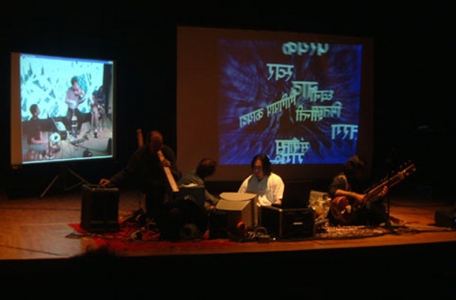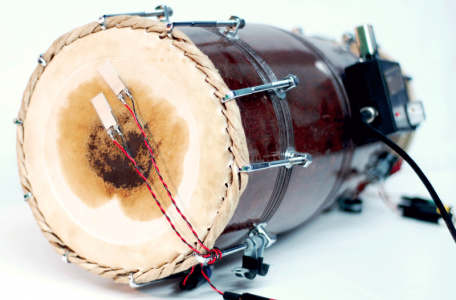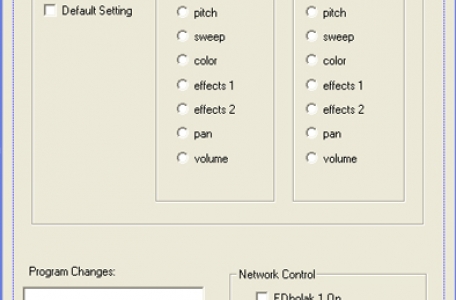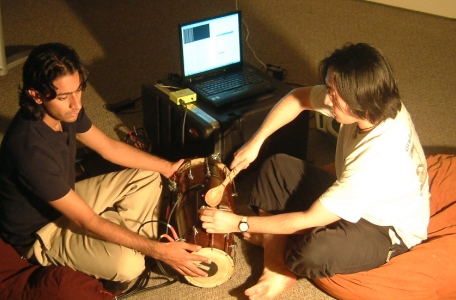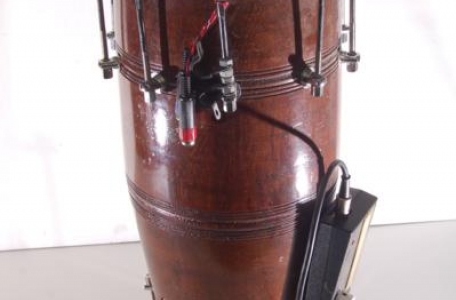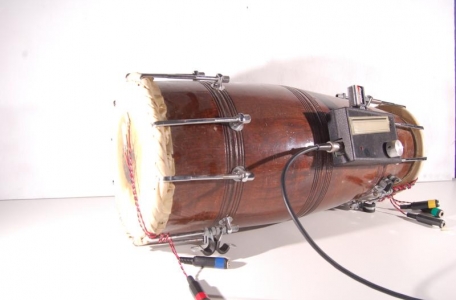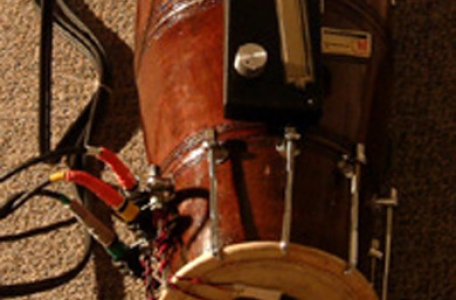The design of the Electronic Dholak is inspired by the collaborative potential present in nearly all traditional percussion instruments. Two musicians play the EDholak, the first striking both heads of the double-sided drum, and the second keeping time with a Digital Spoon and manipulating the sounds of the first player with custom built controls on the barrel of the drum and in software. We further explored multiplayer controllers by networking three drummers playing two EDholaks at the two geographically diverse sites. Finger strikes are captured by five piezo sensors (three for the right hand and two for the left hand) which are stuck directly on the the EDholaks drum skins. Sensors are placed in positions which correlate to tradional Indian drumming. The Digital Spoon has a piezo sensor attached to the back of a flat wooden spoon. There is neoprene padding covering the piezo to keep the striking of the Digital Spoon acoustically quiet. The spoon player has the option of striking anywhere on the drum, or floor, triggering a audio/visual response, or striking on a linear force sensing resistor (FSR) on the EDholak Controller Box, which augments the audio/visual of the spoon strike and the audio/visual instances of all EDholak finger strikes. The Controller Box has a linear FSR and a knob which the spoon player can use with his left hand to augment all sounds/graphic instances. The EDholak world premiere was at New Interfaces for Musical Expression (NIME 2003), in a networked concert between Mcgill University (CANADA) and Princeton University (USA). The EDholak is featured in an excerpt from this networked performance, known as The Gigapop Ritual.
EDHOLAK
The Electronic Dholak (EDholak) is a modified Dholak capable of driving specialized software to control computerized parameters, such as loops, virtual instruments, and visual projections.
